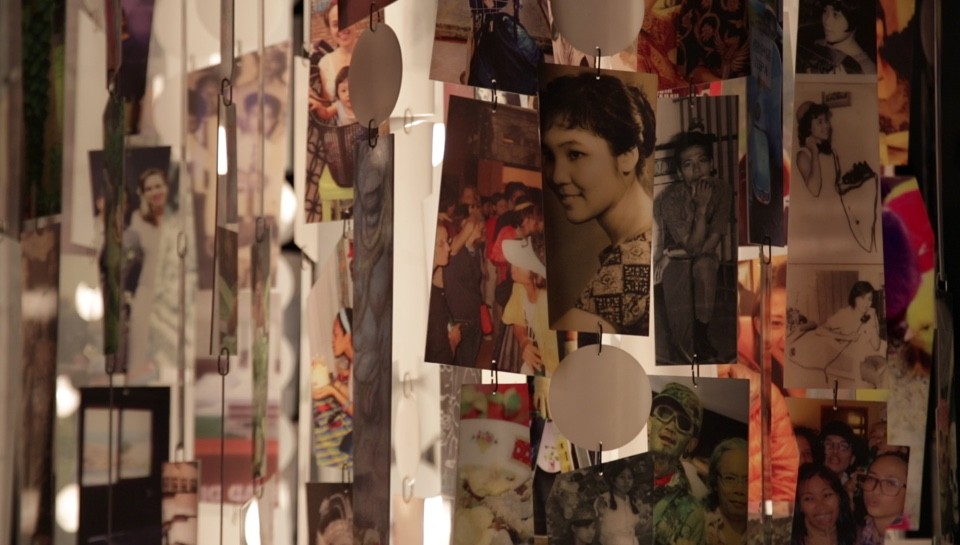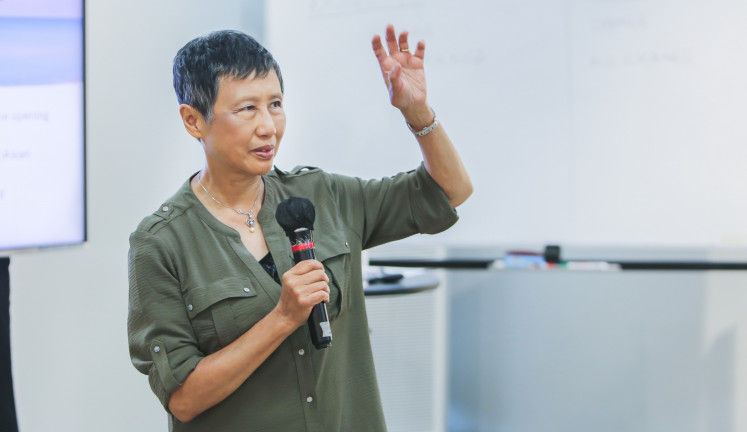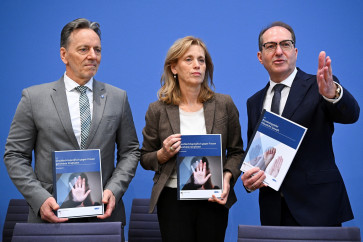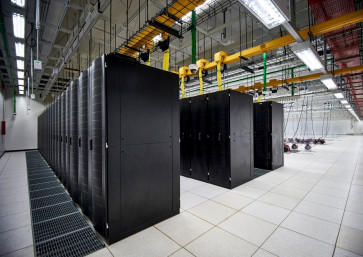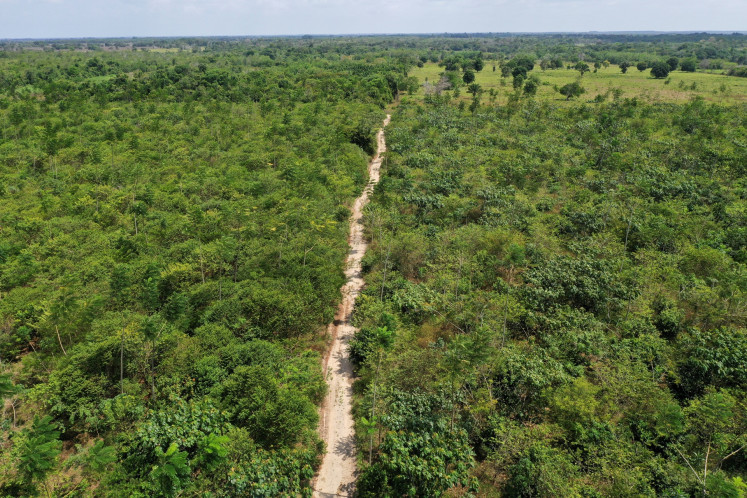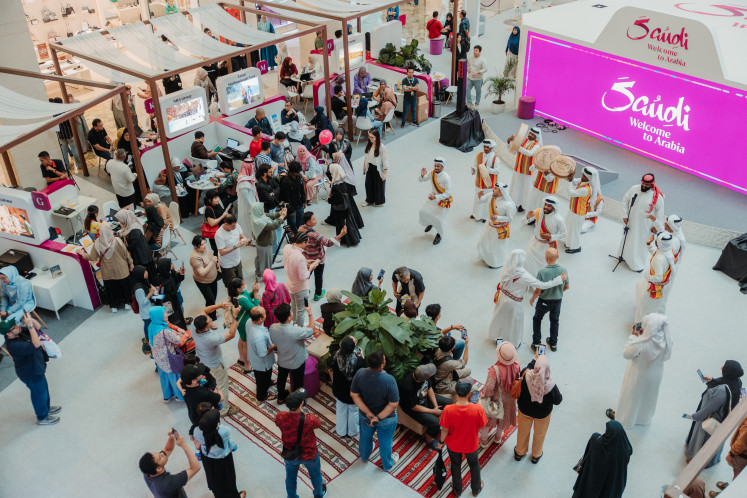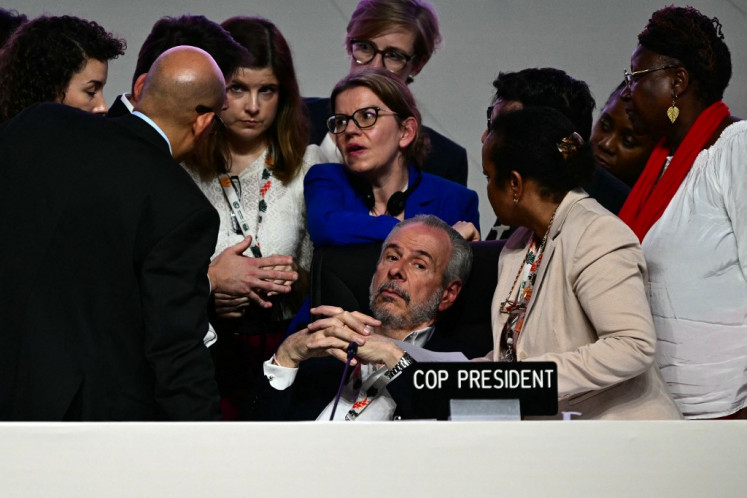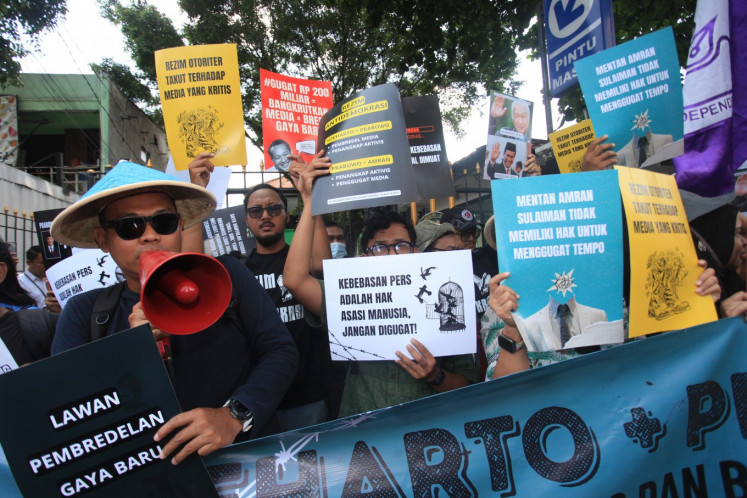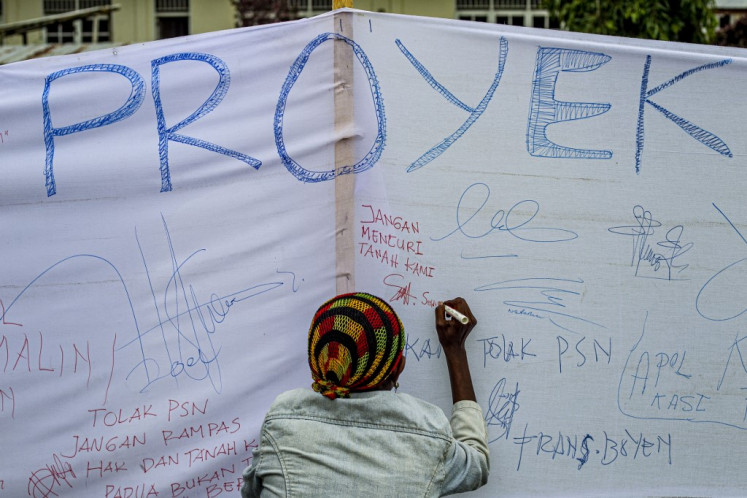Popular Reads
Top Results
Can't find what you're looking for?
View all search resultsPopular Reads
Top Results
Can't find what you're looking for?
View all search resultsTaking creativity to next level through data visualization artworks
Change text size
Gift Premium Articles
to Anyone
D
ata analytics is understandably not everyone’s cup of tea. Some people may turn up their noses upon hearing the term as numbers and complicated formulas suddenly pop up in their heads. Meanwhile, other choose it as an essential medium for the creation of art.
Six local and international artists featured in the Visualizing the Invisible tech-art exhibition have proved that economic, tourism and even geographical data can go beyond the mere representation of statistics; it can be interpreted into works of art, ranging from interactive videos to mixed media infographics.
Sey Min, a data visualization artist and designer from South Korea taking part in the exhibition organized by Suar Artspace, created a web-based interactive visualization titled “Optical Data and the Subjective Value” that elaborates on Indonesia’s tourism and music venue data with the influence of each individual’s different perspective on the value of information.
“Our perspective is shaped by our perception and it influences the value of information, so I was trying to apply the concept to visualization,” Sey Min told The Jakarta Post.
(Read also: Data-driven strategies can solve global problems: Dattabot)
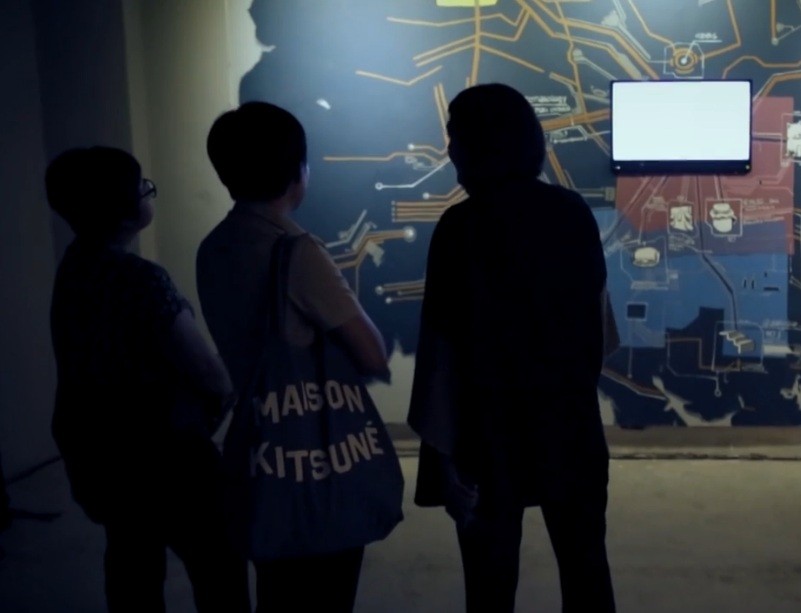 Visitors discuss a tech-art piece on display.(JP/I.G. Dharma J.S.)
Visitors discuss a tech-art piece on display.(JP/I.G. Dharma J.S.)
The 42-year-old artist sees data as a powerful part of our daily lives as it tracks people’s histories and identities. In the process of creating art, Sey Min began with the idea that data was an objective material; people subjectively receive information generated from the same data as the information’s values are different for each individual.
Audiences can play with Sey Min’s interactive artwork by clicking on boxes displayed on the screen. The boxes represent cities across Indonesia, so the size of each box varies according to the number of visitors in each city. Bali is portrayed with the biggest box as it is the most popular destination, while Jakarta’s box dominates in terms of music venues. Audiences can also play with controls on a keyboard to rotate the data perspective.
Meanwhile, the exhibition’s curator Jeong-ok Jeon acknowledged that contemporary artworks based on data and technology might not be easy to understand without explanations. However, she encouraged visitors to ask questions and interact with the artists’ works. “Even though artists put their own perspectives and mediums, audiences can actually receive it in their own way so it’s okay to have a different understanding,” the Korean art curator and lecturer said.
The exhibition, which is free and runs at Pacific Place mall in South Jakarta until Tuesday, showcase artworks from Indonesian artists including Angki Purbandono, Yogyakarta-based House of Natural Fiber foundation and community laboratory Hysteria as well as two other international artists — Angélica Dass from Brazil and Duo Mioon from South Korea. (kes)

